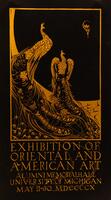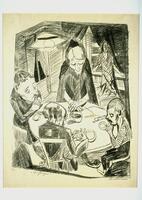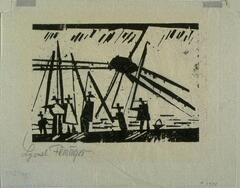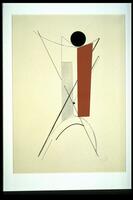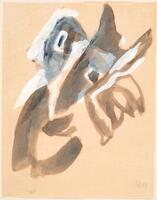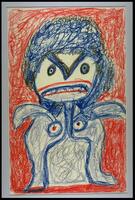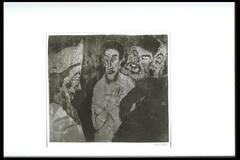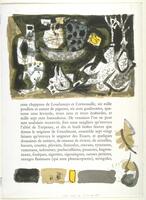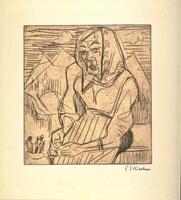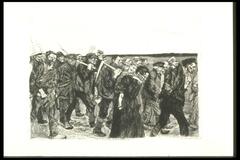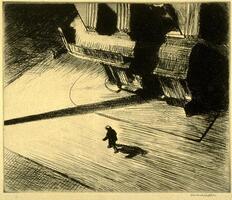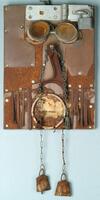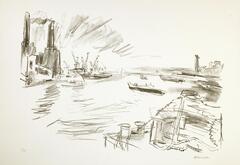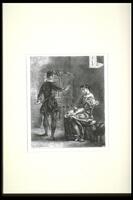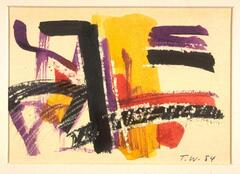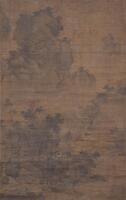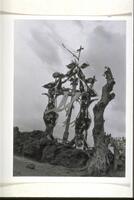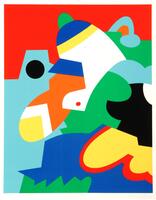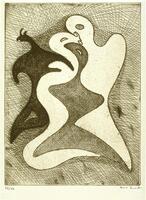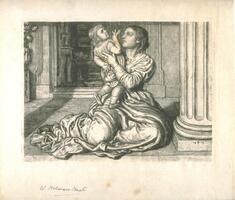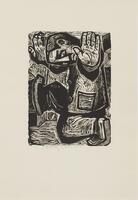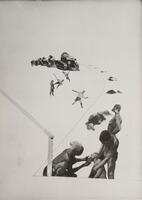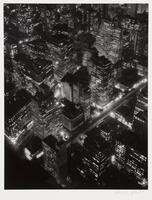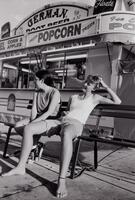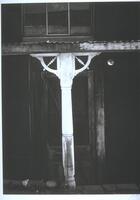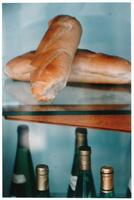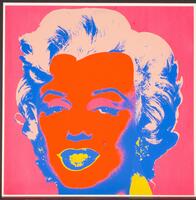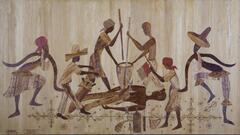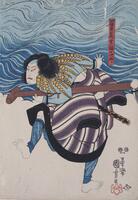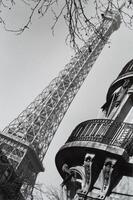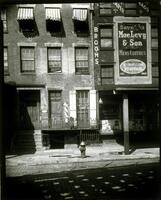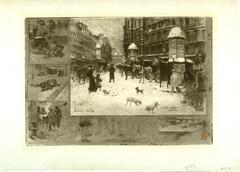Expressionism - Der Blaue Reiter
This portfolio showcases the work of the artist group, der blaue Reiter. Formed in Munich in 1911, the group was born when its leaders, Wassily Kandinsky and Franz Marc, broke away from the Neue Künstlervereinigung München (New Artists’ Association of Munich), after Kandinsky’s painting, Last Judgment, was rejected for an exhibition. Emblematic work of the Der blaue Reiter incorporates abstract shapes that work together to form a flattened perspective. The horse is a recurring motif throughout their work, as is the color blue, which, in accordance with their understanding of color theory, was thought to most closely portray spirituality. The group was brought to an end with the end of World War I.
This portfolio brings together work by some of the key figures in der blaue Reiter, and covers the years leading up to the formation of the group, the period when the group was active, and the years directly following the end of World War II. As such, it offers the opportunity for approaching the work in a comparative way – both across artists, as well as time frames, by considering the creative development of the members.
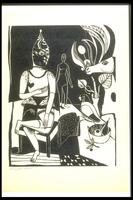
Heinrich Campendonk
Seated Harlequin
woodcut on paper
14 ⅞ in x 11 7/16 in (37.78 cm x 29.05 cm);19 ⅛ in x 14 3/16 in (48.58 cm x 36.04 cm);18 in x 22 1/16 in (45.72 cm x 56.04 cm)
Museum Purchase
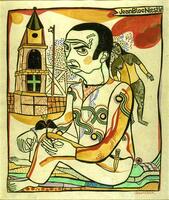
Heinrich Campendonk
Portrait of Jean Bloe Niestlé
woodcut with watercolor, gouache and gold on paper
13 11/16 in x 11 9/16 in (34.77 cm x 29.37 cm);22 ⅛ in x 28 ⅛ in (56.2 cm x 71.44 cm)
Museum Purchase
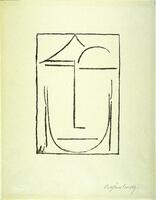
Alexei Jawlensky
Kopf
lithograph on paper
7 1/16 in x 4 15/16 in (17.9 cm x 12.5 cm);11 9/16 in x 9 in (29.4 cm x 22.8 cm);19 in x 14 in (48.3 cm x 35.6 cm)
Museum Purchase

Wassily Kandinsky
Plate X from Kleine Welten
drypoint on paper
9 3/8 x 7 13/16 in. (23.7 x 19.7 cm);11 15/16 x 10 9/16 in. (30.2 x 26.8 cm);19 1/16 x 14 1/16 in. (48.3 x 35.6 cm)
Museum Purchase

Wassily Kandinsky
Plate XI from Kleine Welten
drypoint on paper
9 3/8 x 7 11/16 in. (23.7 x 19.4 cm);11 13/16 x 10 9/16 in. (30 x 26.8 cm);19 1/16 x 14 1/16 in. (48.3 x 35.6 cm)
Museum Purchase
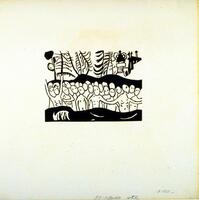
Wassily Kandinsky
Täuflinge
woodcut on paper
11 1/16 in x 10 15/16 in (28.1 cm x 27.8 cm);14 3/8 in x 19 3/8 in (36.5 cm x 49.2 cm)
Museum Purchase
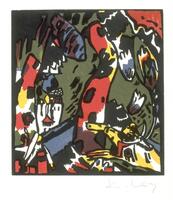
Wassily Kandinsky
The Archer
woodblock on paper
6 1/2 in x 6 in (16.5 cm x 15.2 cm);12 3/16 in x 9 1/2 in (30.9 cm x 24.1 cm);19 5/16 in x 14 5/16 in (49 cm x 36.3 cm)
Museum purchase
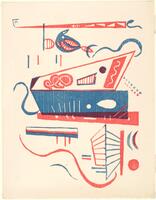
Wassily Kandinsky
Woodcut for 'XXe Siècle' (Gravure sur bois pour 'XXe Siècle')
color woodcut on beige wove paper
10 1/8 in. x 13 in. ( 25.7 cm x 33 cm )
Gift of the Estate of Helen B. Hall

Wassily Kandinsky
Small Worlds III
lithograph on paper
14 in x 11 in (35.56 cm x 27.94 cm);10 15/16 in x 9 1/8 in (27.78 cm x 23.2 cm);13 9/16 in x 11 in (34.4 cm x 28 cm);19 5/16 in x 14 3/8 in (49 cm x 36.5 cm)
Museum Purchase
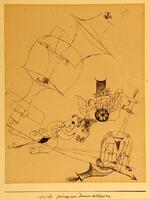
Paul Klee
Zeichnung zum Drama der Entzweiung
pen and ink on paper on board
17 3/8 in x 14 3/16 in (44.1 cm x 36.1 cm);11 1/16 in x 8 11/16 in (28.1 cm x 22 cm);18 1/2 in x 15 3/8 in x 9/16 in (47 cm x 39 cm x 1.5 cm);17 3/8 in x 14 3/16 in (44.1 cm x 36.1 cm);15 3/4 in x 13 7/16 in (40 cm x 34.2 cm)
Gift of Nesta Spink in memory of Helen B. Hall
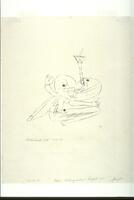
Paul Klee
Blowing Out a Candle
lithograph on paper
11 1/16 in x 8 ⅞ in (28.1 cm x 22.54 cm);5 3/10 in x 4 15/16 in (13.49 cm x 12.54 cm);19 ⅜ in x 14 ⅜ in (49.21 cm x 36.51 cm)
Museum Purchase
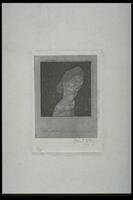
Paul Klee
Charme (Weibliche Anmut)
etching on paper
5 3/16 in x 3 9/16 in (13.18 cm x 9.05 cm);19 3/10 in x 14 ⅜ in (49.05 cm x 36.51 cm);16 ⅝ in x 12 ½ in (42.23 cm x 31.75 cm)
Museum Purchase

